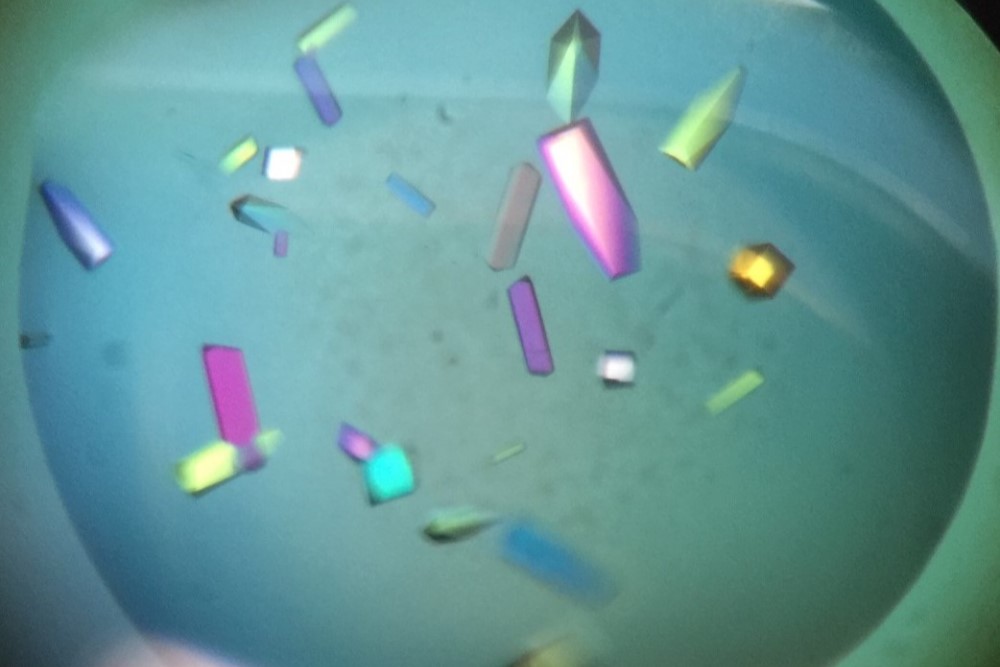
Introduction to Crystal Growth 101 (Protein Crystallization)
There is much more to crystallization than making, formulation, or buying and using tools.
Consider some important principles as a foundation of your crystallization strategy, as presented originally by the giant of crystallization, Alex McPherson.
The Sample
The sample is the most important variable in the crystallization experiment. Prepare, purify, handle, and store the sample with only the greatest care and respect. Manipulate the sample and refine its environment (buffer, reagent) as needed to produce the desired crystals.
Homogeneity
Purify, purify, then purify some more. Start with a pure, uniform population of the sample.
Solubility
Solubilize the sample in a sample buffer that is optimized with regard to pH, buffer, and excipients that dissolve the sample to high concentration free of aggregates, precipitate, or other phases. Pursue monodispersity not polydispersity.
Stability
Prepare and maintain the sample in a chemical and physical solution that promotes optimal stability of the sample. Do not allow the sample to go to the dark side, form oligomers, undergo significant conformational change, denature or change in any way before and during crystallization. Pursue a stable and unchanging sample.
Supersaturation
Find and pursue ways to move the sample into a supersaturated state. Using reagents, pH, temperature, and other variables to move sample equilibrium from a solution to a solid.
Association
Promote the orderly association of the sample molecules while avoiding non-specific aggregation, precipitate, or phase separation. Manipulate the chemical and physical environment to facilitate positive molecular interactions.
Nucleation
Promote and induce a few nuclei in a controlled manner. The number, size, and quality of the crystal depend upon the first nuclei and the mechanism of their growth. Manipulate the chemical and physical environment to produce limited nucleation and controlled growth.
Variety
Pursue everything. Explore as many chemical, biochemical, and physical options and opportunities as possible for the growth and optimization of the crystal. Be thorough and relentless.
Control
Maintain control of the experimental system, at an optimal state, free of unknowns, perturbations, and fluctuations, from start to finish.
Impurities
Keep it clean. Avoid and discourage the presence, inclusion, and formation of impurities in the sample, reagent, and containers. This can minimize the incorporation of impurities into the crystal lattice, as well as minimize problems with reproducing experimental results.
Preservation
Take care of the crystal, protect them from shock, as well as chemical, biochemical, and physical change or disruption.
References:
1. Introduction to protein crystallization, McPherson, A. and Gavira, J.A. (2014) Acta Crystallographica F, Volume 70, Part 1, 2-20.
2. Some Words of Advice from an Old Hand, Alexander McPherson, pages 1-9, in Protein Crystallization, Second Edition, Edited by Terese Bergfors. International University Line, 2009.
Crystal Growth 101 was first published by Hampton Research.
This resource serves as a guide to help you get started. Looking for a more in-depth discussion on optimizing your protein crystallization? Our support team is available for further analytical discussion at +65 6744 6645 or

